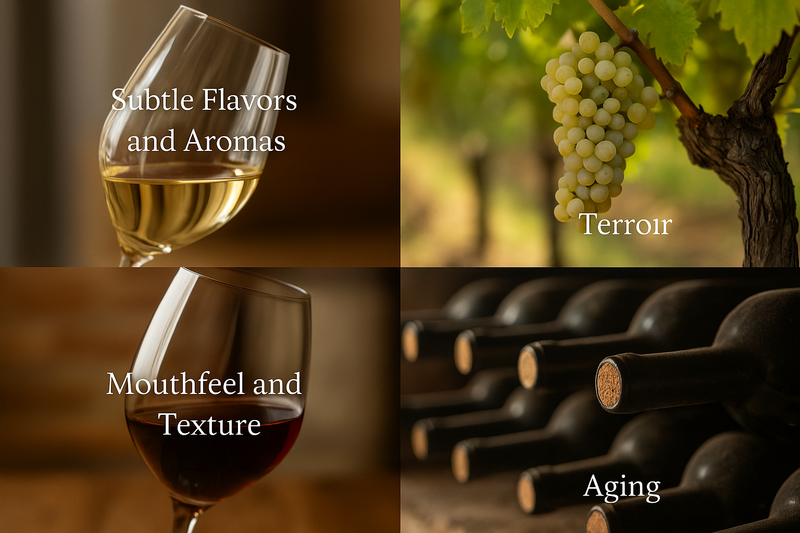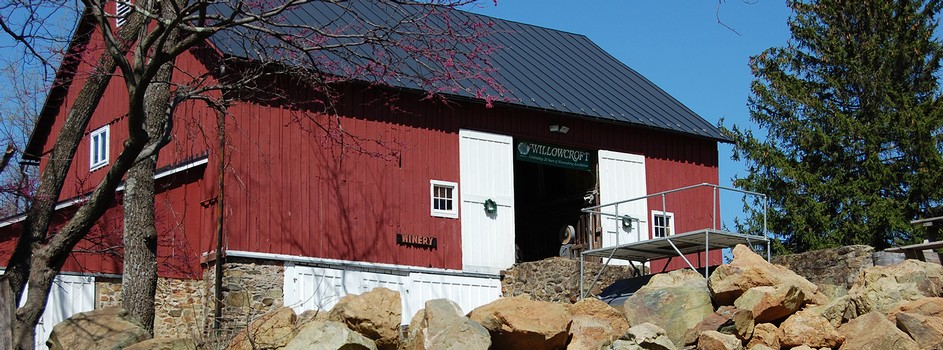What Are Wine Nuances? Discovering the Subtle Details in Every Sip

When wine lovers talk about “nuance,” they’re not just being poetic—it’s a real and important concept in the world of wine. Nuances are the fine details, delicate layers, and barely-there notes that make one wine stand apart. They’re the difference between a good glass of wine and one you can’t stop thinking about.
So what exactly are wine nuances, and how can you start to recognize them? Let’s explore.
Wine nuances refer to the subtle, intricate characteristics that give a wine depth and complexity. These aren’t the big, bold flavors you get on the first sip—they’re the supporting cast, the whispers behind the main melody. They might show up as a floral aroma that lingers for a moment, a hint of minerality on the finish, or a silky mouthfeel that softens the edges of a structured red.
These nuances show up in three main areas:
Most wines have dominant traits—citrus in a Sauvignon Blanc or dark fruit in a Cabernet. But nuanced wines go beyond that. You might detect:
- A trace of white pepper in a Syrah
- A honeysuckle note in a Viognier
- A whisper of vanilla or toast from oak aging
These aromas and flavors may not jump out immediately. Instead, they emerge gradually as the wine opens in the glass.
Nuance is often tied to terroir—the unique combination of soil, climate, elevation, and vineyard conditions where the grapes are grown. A Chardonnay grown in limestone-rich soil may reveal a chalky minerality, while the same grape grown in volcanic terrain might hint at smoke or flint.
These subtle variations can make the same varietal taste completely different from one vineyard to the next.
The physical sensation of wine in your mouth is a powerful (and often underrated) element of nuance. Consider:
- Silky or velvety tannins in a well-aged red
- A crisp, tingling acidity in a cool-climate white
- A creamy texture in a sur lie–aged Chardonnay
These textures can elevate a wine, adding refinement and polish to the experience.
With age, wines evolve—and so do their nuances. While a young wine may burst with fruit, an older wine often reveals tertiary characteristics like leather, dried herbs, forest floor, or nutty, oxidative notes. These flavors add richness, depth, and layers that make the wine far more complex than it once was.
Nuance can be complex to describe until you’ve tasted it, but here are a few examples to look for:
- A hint of vanilla from oak barrel aging
- A subtle spice note, like clove or cinnamon, in a red wine
- Minerality that reflects the soil in which the grapes were grown
- A delicate floral aroma, like jasmine or orange blossom
- A plush, silky mouthfeel from well-integrated tannins
Nuance is what turns wine from something we drink into something we experience. It invites us to slow down, sip again, and explore what’s in the glass. And while not every wine is meant to be deeply complex, recognizing nuance helps you become a more thoughtful, engaged wine drinker.
So the next time you pour a glass, take a moment to notice what’s beyond the first impression. You might discover something wonderful in the details.

